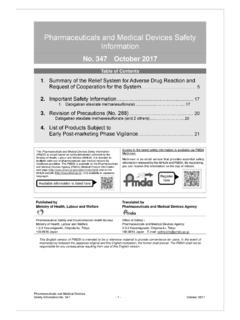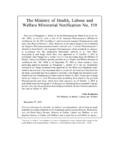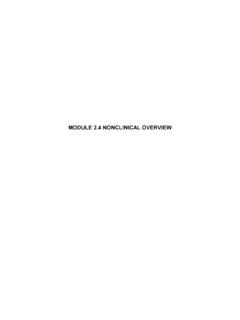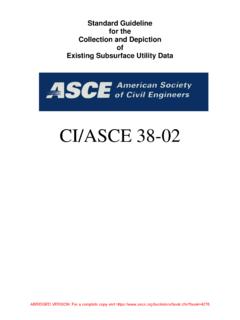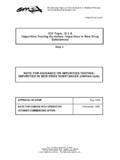Transcription of IMPURITIES GUIDELINE FOR RESIDUAL S Q3C(R5)
1 INTERNATIONAL CONFERENCE ON HARMONISATION OF TECHNICAL REQUIREMENTS FOR REGISTRATION OF PHARMACEUTICALS FOR HUMAN USE ICH HARMONISED TRIPARTITE GUIDELINE IMPURITIES : GUIDELINE FOR RESIDUAL SOLVENTS Q3C(R5) Current Step 4 version dated 4 February 2011 Parent GUIDELINE dated 17 July 1997 (Revised PDE for THF and NMP dated September 2002 and October 2002 incorporated in core GUIDELINE in November 2005 and revised PDE for Cumene incorporated in core GUIDELINE in February 2011) This GUIDELINE has been developed by the appropriate ICH Expert Working Group and has been subject to consultation by the regulatory parties, in accordance with the ICH Process.
2 At Step 4 of the Process the final draft is recommended for adoption to the regulatory bodies of the European Union, Japan and USA. Q3C(R5) Document History First Codification History Date New Codification Parent GUIDELINE : IMPURITIES : GUIDELINE for RESIDUAL Solvents Q3C Approval by the Steering Committee under Step 2 and release for public consultation. 6 November 1996 Q3C Q3C Approval by the Steering Committee under Step 4 and recommendation for adoption to the three ICH regulatory bodies.
3 17 July 1997 Q3C Revision of the PDE information for THF contained in the Parent GUIDELINE Q3C(M) for THF Permissible Daily Exposure (PDE) for Tetrahydrofuran (THF): revision of PDE based on new toxicological data. Approval by the Steering Committee of the new PDE for THF under Step 2 and release for public consultation. 20 July 2000 in Q3C(R1) Q3C(M) for THF Approval by the Steering Committee under Step 4 and recommendation for adoption to the three ICH regulatory bodies. 12 September 2002 in Q3C(R1) Revision of PDE information for NMP contained in the Parent GUIDELINE Q3C(M) for NMP Permissible Daily Exposure (PDE) for N-Methylpyrrolidone (NMP): revision of PDE based on new toxicological data.
4 Approval by the Steering Committee of the Revision under Step 2 and release for public consultation. 20 July 2000 in Q3C(R2) Q3C(M) for NMP Approval by the Steering Committee under Step 4 and recommendation for adoption to the three ICH regulatory bodies. 12 September 2002 in Q3C(R2) Q3C(M) for NMP Corrigendum to calculation formula approved by the Steering Committee. 28 October 2002 in Q3C(R3) Q3C, Q3C(M) for THF and Q3C(M) for NMP The parent GUIDELINE is now renamed Q3C(R3) as the two updates (PDE for N-Methylpyrrolidone and PDE for Tetrahydrofuran) and the corrigendum of the update for NMP have been added to the parent GUIDELINE .
5 November 2005 Q3C(R3) Parent GUIDELINE : IMPURITIES : GUIDELINE for RESIDUAL Solvents Q3C(R4) Update of Table 2, Table 3 and Appendix 1 to reflect the revision of the PDEs for N-Methylpyrrolidone and Tetrahydrofuran. February 2009 Q3C(R4) Revision of PDE information for Cumene contained in the Parent GUIDELINE PDE for Cumene Permissible Daily Exposure (PDE) for Cumene: revision of PDE based on new toxicological data. Approval by the Steering Committee under Step 2 and release for public consultation. 26 March 2010 in Q3C(R5) Current Step 4 version Q3C(R5) Approval of the PDE for Cumene by the Steering Committee under Step 4 and recommendation for adoption to the three ICH regulatory bodies.
6 The PDE for Cumene document has been integrated as part IV in the core Q3C(R4) GUIDELINE which was then renamed Q3C(R5). The Table 2, Table 3 and Appendix 1 have been updated to reflect the revision of the PDE for Cumene. 4 February 2011 Q3C(R5) i IMPURITIES : GUIDELINE FOR RESIDUAL SOLVENTS ICH Harmonised Tripartite GUIDELINE TABLE OF CONTENTS PART I: 1. INTRODUCTION .. 1 2. SCOPE OF THE GUIDELINE .. 1 3. GENERAL PRINCIPLES .. 2 Classification of RESIDUAL Solvents by Risk Assessment .. 2 Methods for Establishing Exposure Limits.
7 2 Options for Describing Limits of Class 2 Solvents .. 3 Analytical Procedures .. 4 Reporting levels of RESIDUAL solvents .. 4 4. LIMITS of RESIDUAL SOLVENTS .. 5 Solvents to Be Avoided .. 5 Solvents to Be Limited .. 6 Solvents with Low Toxic Potential .. 7 Solvents for which No Adequate Toxicological Data was Found .. 8 GLOSSARY .. 9 APPENDIX 1. LIST OF SOLVENTS INCLUDED IN THE GUIDELINE .. 10 APPENDIX 2. ADDITIONAL BACKGROUND .. 14 Environmental Regulation of Organic Volatile Solvents .. 14 RESIDUAL Solvents in Pharmaceuticals.
8 14 APPENDIX 3. METHODS FOR ESTABLISHING EXPOSURE LIMITS .. 15 PART II: PDE FOR TETRAHYDROFURAN .. 18 PART III: PDE FOR N-METHYLPYRROLIDONE (NMP) .. 20 PART IV: PDE FOR CUMENE .. 22 1 PART I: IMPURITIES : GUIDELINE FOR RESIDUAL SOLVENTS Having reached Step 4 of the ICH Process at the ICH Steering Committee meeting on 17 July 1997, this GUIDELINE is recommended for adoption to the three regulatory parties to ICH 1. INTRODUCTION The objective of this GUIDELINE is to recommend acceptable amounts for RESIDUAL solvents in pharmaceuticals for the safety of the patient.
9 The GUIDELINE recommends use of less toxic solvents and describes levels considered to be toxicologically acceptable for some RESIDUAL solvents. RESIDUAL solvents in pharmaceuticals are defined here as organic volatile chemicals that are used or produced in the manufacture of drug substances or excipients, or in the preparation of drug products. The solvents are not completely removed by practical manufacturing techniques. Appropriate selection of the solvent for the synthesis of drug substance may enhance the yield, or determine characteristics such as crystal form, purity, and solubility.
10 Therefore, the solvent may sometimes be a critical parameter in the synthetic process. This GUIDELINE does not address solvents deliberately used as excipients nor does it address solvates. However, the content of solvents in such products should be evaluated and justified. Since there is no therapeutic benefit from RESIDUAL solvents, all RESIDUAL solvents should be removed to the extent possible to meet product specifications, good manufacturing practices, or other quality-based requirements.



